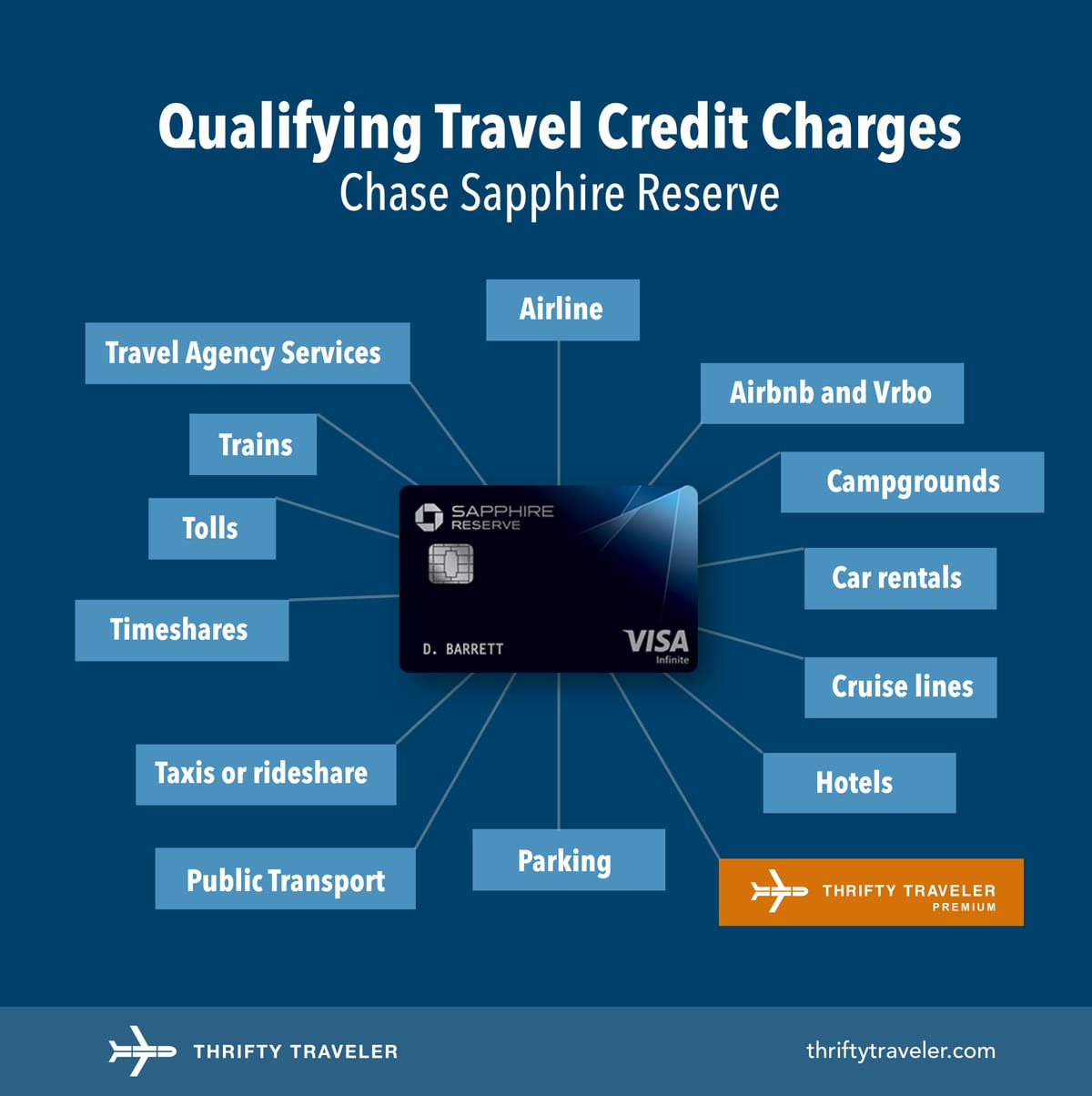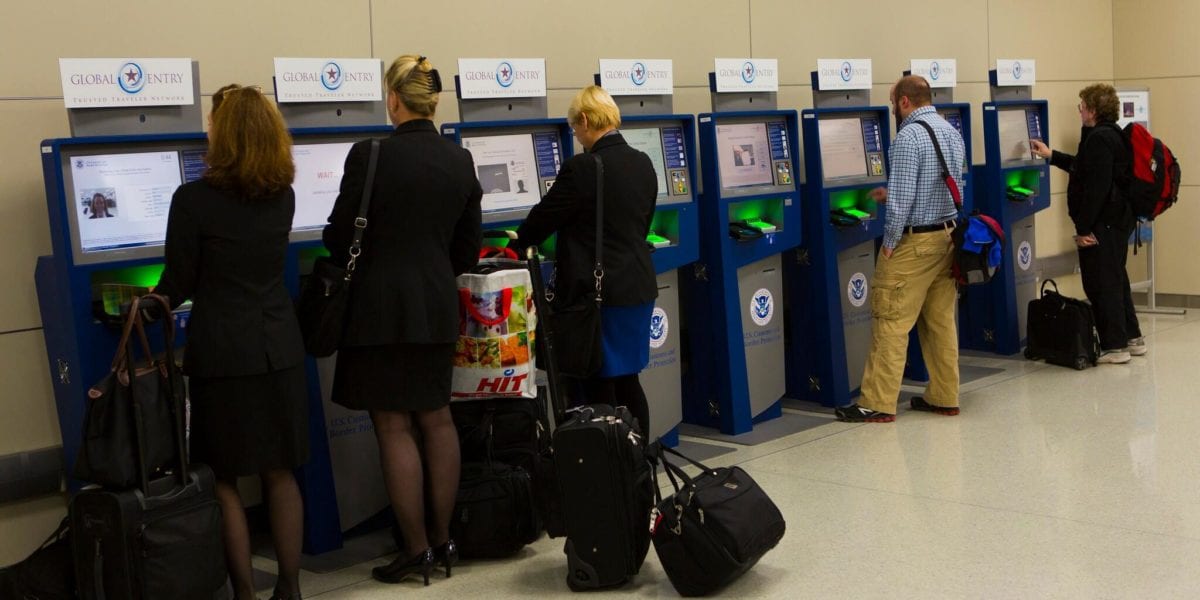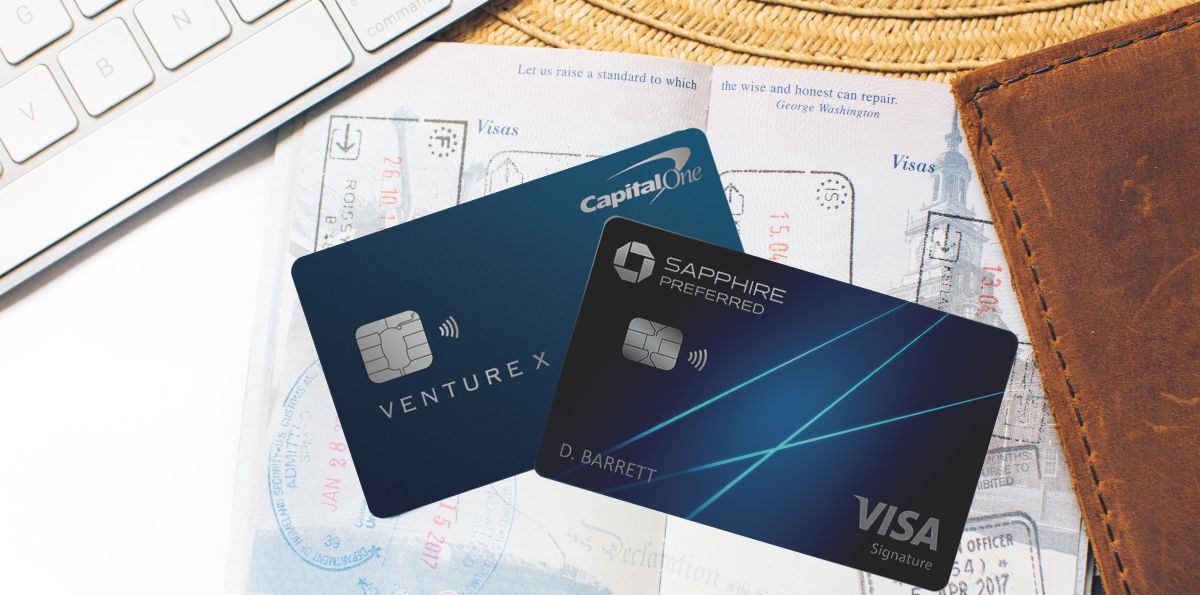For years the *chase sapphire reserve* was a no-brainer: a must-have credit card for frequent travelers looking for premium perks. But is that still the case following the card's recent “refresh?”
The revamped Sapphire Reserve comes with a laundry list of new perks and statement credits … and of course, a higher $795 annual fee. But it also includes a big new bonus: bonus_miles_full
For many, the new perks and welcome offer bonus will outweigh the higher cost (especially in the first year), but that isn't universally true.
So let's do the math to help you decide whether the Chase Sapphire Reserve is worth its annual fee.
Related reading: A Full Review of Chase’s New-Look Travel Card, the Chase Sapphire Reserve
The Chase Sapphire Reserve Annual Fee
First things first, we need to discuss the elephant in the room: Chase's top travel credit card comes with a steep $795 per year annual fee – the highest of any (publicly available) travel card currently on the market.
It's certainly not for the faint of heart, but you'll quickly see that the fee is a bit misleading. By taking advantage of even a few of the card's annual, semi-annual, and monthly statement credits, you can come out on top … and then some.
Benefits & Credits
So what does $795 get you? If you're familiar with the *chase sapphire preferred* – Chase's entry-level travel credit card – the Sapphire Reserve is all that … and then some.
Here's a look at the card's most prominent features and benefits that might make carrying it a worthwhile proposition.
Annual $300 Travel Credit
Let's start with the most important question: Do you plan to spend $300 a year on travel?
If not, move on: The Sapphire Reserve definitely isn't the card for you. There are far better alternatives out there for occasional travelers … at much cheaper price points.
But if you do spend $300 a year or more on travel, you can automatically consider the Reserve Card's annual fee more like $495. That's because each and every year, you'll get an easy-to-use $300 annual travel credit. And it covers a lot of ground, including the obvious things like flights and hotels, as well as many expenses you might not normally consider to be “travel.”
Whether it's a taxi, Uber, hotel, plane ticket, cruise, or any other travel expense, Chase automatically reimburses you up to $300 each year for any purchases that code as travel. No other card on the market provides an easier-to-use annual travel credit.
That's $300 right back in your pocket, effectively reducing the annual fee to $495. You don't need to file a claim or jump through hoops to receive your money. Just spend on travel, pay with your Sapphire Reserve, and the $300 credit kicks in automatically.
Read more: All About the Chase Sapphire Reserve's $300 Travel Credit
$500 “The Edit” Hotel Credit
The next and biggest statement credit is up to $500 per year for prepaid, “The Edit” hotel bookings made through Chase Travel℠. While that big number sounds great, it's not quite as simple as it seems.
Here's how it works: You get $250 to use from January – June, and another $250 to use from July – December, up to $500 per year.
This new hotel collection from Chase offers a curated set of upscale properties, similar to Amex's Fine Hotels + Resorts®. In addition to the card's semi-annual credit, you'll also get added benefits like complimentary breakfast, a $100 property credit, possible upgrades, and more. But importantly: You must book at least a two-night stay for the credit to kick in.
While the list of eligible properties is somewhat limited and skews higher-end, this new credit can amount to real savings on your next hotel stay. And added perks like breakfast, a $100 property credit, and the chance at a room upgrade make it all the sweeter.
Just keep in mind: This credit is only for the primary cardholder, requires a two-night minimum stay, and the credited amount won't earn any points. Still, it's a nice benefit with some really valuable perks. Saving up to $250, twice per year, at one of these properties will go a long way toward justifying the card's annual fee … as long as you can use it.
$300 Dining Credit
With the Sapphire Reserve, you'll also get up to $150 in statement credits from January through June and again from July through December for a maximum of $300 annually for dining at restaurants that are part of our “Sapphire Reserve Exclusive Tables.”
You'll mostly find eligible restaurants in major metropolitan areas like New York City, Chicago, and Los Angeles, but even some mid-sized cities like Charleston, Minneapolis, Nashville, Denver, and more have a handful of restaurants where you can use this credit. Since these restaurants skew higher end (again), you should have no trouble using your semi-annual $150 credit up in one fell swoop … or over multiple visits.
$300 DoorDash Credit & Complimentary DashPass
Sapphire Reserve cardholders get a $5 per month discount on DoorDash restaurant orders and two monthly coupons of up to $10 off on grocery, convenience, and other non-restaurant orders through Dec. 31, 2027.
These promos must be applied at checkout when placing an order on DoorDash using the Sapphire Reserve card enrolled in DashPass. Unfortunately, if you don't use one of your promos, it won't carry over to the next month.
You'll also get a complimentary DoorDash DashPass membership, which provides access to free deliveries and lower platform fees. Just be sure to activate this benefit by Dec. 31, 2027, and it'll be good for a minimum of one year.
$300 StubHub Credit
You now get up to $150 in statement credits from January through June and again from July through December for a maximum of $300 annually for StubHub and viagogo purchases through Dec. 31, 2027.
If you regularly attend live events like concerts, sports, or even theater and comedy shows, this credit should be pretty easy to use and help you get some value back out of your card's high annual fee.
$120 Global Entry, TSA PreCheck®, or NEXUS Credit
With the Sapphire Reserve, you can receive up to $120 in credit once every four years to cover the cost of Global Entry or TSA PreCheck®. The Sapphire Reserve also offers an application credit for NEXUS.
Membership in these programs lasts for five years, so you're set with this credit. And since Global Entry includes TSA PreCheck, it's the obvious choice if you're planning any international travel.
Read our guide to enrolling in Global Entry!
$120 Lyft Credit
Sapphire Reserve cardholders get access to up to $10 in monthly Lyft credits (up to $120 per year) to use on rides – plus earn 5x total points on your purchase – through Sept. 30, 2027. Unfortunately, these credits are use-them-or-lose-them, so if you don't use rideshare services on a regular basis, you won't be able to stack the credits for a pricier ride later.
Complimentary Apple TV+ & Apple Music Subscription
You'll now get a complimentary Apple TV+ and Apple Music subscription, just for holding the Sapphire Reserve card (through June 22, 2027). If you're already paying for one (or both) of these services, that's an annual value of $250.
With tons of original content and access to music across all your devices, this will no doubt prove to be a useful benefit for many. However, one thing to note about this credit is that it's not valid for Apple One subscriptions or even family subscriptions of Apple Music or Apple TV+.
$120 Peloton Credit
Get $10 in statement credits per month on eligible Peloton memberships through Dec. 31, 2027, for a maximum of $120 per year (activation required). Plus, you'll earn 10x total points on eligible Peloton equipment and accessory purchases over $150 through Dec. 31, 2027.
This is likely the least useful credit of all the new perks you get with the Sapphire Reserve, but if you're already paying for a Peloton membership, saving $10 per month isn't nothing.
Airport Lounge Access
The Sapphire Reserve comes with a complimentary Priority Pass Lounge membership. This opens the door for you (and up to two guests) to hang out in 1,300-plus airport lounges all over the world.
This Priority Pass lounge benefit is practically a standard for premium travel cards these days. But if you don't have lounge access elsewhere, it's certainly a worthwhile perk.
Additionally, Sapphire Reserve cardholders will also get access to Chase's new Sapphire Airport Lounges. Chase currently has seven open in Boston (BOS), Hong Kong (HKG), New York City-LaGuardia (LGA), New York City (JFK), Phoenix (PHX), San Diego (SAN), and Philadelphia (PHL) … and more are on the way.
These Chase lounges are run in collaboration with Airport Dimensions, the same group behind “The Club” family of lounges that you'll find throughout the U.S. that Priority Pass members can currently access. But Chase has upped the ante for its own lounges: The design is chic and spacious, complimentary food and drinks area big step above your typical airport club, and there are also upscale amenities like showers, wellness areas, game rooms, beer gardens and more.

Sapphire Reserve cardholders get unlimited complimentary access to Sapphire Lounges. They can also bring up to two guests free of charge. Authorized users on the Reserve get their own access and guests, too.
One small hitch: It's not the Reserve that gets you in, but the Priority Pass membership you get from your Reserve card that gets you access. Just be sure to activate that account, and you should be set.
Read more: Chase is Winning The Airport Lounge Wars … & It’s Not Close
Travel Protections
Many travel cards provide some level of protection when things go awry. But in that department, the Sapphire Reserve is second to none.
It all starts with primary rental car coverage. When you charge your car rental to the Chase Sapphire Reserve card, you can simply decline the insurance from the rental company and be covered up to $75,000 for theft and damage. So if you get in an accident, you can bypass your own auto policy and go straight to Chase for assistance.
Just note that this is not liability insurance, so it won't cover medical bills, damage to another vehicle, or damage to property.
Another big benefit is the card's trip cancellation and delay reimbursement coverage. This is a benefit that I've personally used and found it to be quite valuable. It kicks in for any delay lasting six hours or more and covers up to $500 in expenses (per covered passenger) for things like food, toiletries, and lodging.
You'll also get coverage for lost or delayed bags when using your Sapphire Reserve to pay for your airline ticket. If your checked bags are delayed more than six hours, the card will reimburse you up to $100 per day for up to five days. This coverage is meant to cover the cost of essential items like toiletries, clothing, and cell phone charging cables, for example.
Finally, the Sapphire Reserve provides a benefit I hope you never need to use: Medical evacuation coverage. If you or a member of your immediate family are injured or become sick during a trip far that results in an emergency evacuation, you can be covered for medical services and transportation up to $100,000. This isn't a benefit that you'll find on many other travel cards and can be a true lifesaver if you ever find yourself needing to use it.
Automatic IHG One Rewards Platinum Elite Status
Finally, the Sapphire Reserve is your ticket to instant hotel elite status with IHG. Just for holding the card, you'll get automatic IHG Platinum elite status which allows you to earn even more points on paid stays, a better shot at a room upgrade, early check-in (subject to availability), a welcome amenity, and more.
While this is no means the best hotel elite status in the world, it's still a nice perk to have if you're staying at an IHG hotel. You can even earn IHG's top-tier diamond status, which gets you free breakfast and Hertz President's Circle status by spending $75,000 per year on your Sapphire Reserve card.
That's no doubt a steep spending requirement for many, but you'll also get an annual $250 credit for “The Shops” at Chase, a $500 Southwest travel credit (redeemable through Chase Travel), and instant Southwest A-List status when you do.
Doing the Math
Now that you know what the annual fee is – and what it gets you – it's time to do the math and determine whether or not it's worth paying.
The Sapphire Reserve's annual $300 travel credit effectively lowers the annual fee to $495 for most travelers – and, again, if you're not able to easily use this up each year, there's likely a better card out there for you. If you are enrolling in (or renewing) TSA PreCheck or Global Entry, you can shave another $78 to $120 off the card's annual fee … but that's only good once every five years.
Looking at the card's new perks and statement credits, the up to $500 per year “The Edit” hotel credit, up to $300 per year Chase Dining credit, and up to $300 StubHub credit are likely some of the most useful benefits. Even if you only use each of those credits once per year, you're still getting $550 in value out of them and covering the card's annual fee in full.
Getting a complimentary Apple TV+ and Apple Music subscription is another nice perk, as this is something a lot of people are already paying for each month. If you take a Lyft a handful of times per year and order from DoorDash every once in a while, you'll be even further ahead … and everything else is just gravy.
Here's what it boils down to: If you're willing to jump through a few hoops and travel enough to use the airport lounge access – especially the new Sapphire Lounges – then you could easily justify the annual fee. The same could be said for anyone that would otherwise be paying for Lyft, DoorDash, or add-on travel insurance.
All those are real, valuable benefits that save people money. Once you add in the card's current welcome offer, it's even more appealing … at least for the first year or two.
What Are the Alternatives?
For anyone looking for an alternative to the Sapphire Reserve's $795 annual fee, the *chase sapphire preferred* and the *venture x* might be just the solution.
Here's why: With the Sapphire Preferred, you're getting a way to earn Ultimate Rewards points on all travel purchases, bonus points when dining out, and travel protections similar to the Sapphire Reserve, all for a much more manageable *CSP annual fee* annual fee.
And with the Venture X, you get easy-to-use rewards and premium travel perks like airport lounge access, rental car elite status, an annual $300 travel credit, and more – all at a middle-of-the-pack, *Venture X annual fee* price point.
Put these two cards together and you get access to two different sets of transfer partners, two welcome offer bonuses, a solid return on all of your spending, and top-notch travel perks … for much less in annual fees than what you'd pay with the Sapphire Reserve alone.
By giving up the Sapphire Reserve in favor of these two cards, you're sacrificing very little and gaining a whole lot … all while saving money.
Read more: Why the Capital One Venture X and Chase Sapphire Preferred Make the Perfect Combo
Bottom Line
The *chase sapphire reserve* just got a major refresh, adding new statement credits and perks – but also hiking the annual fee to $795. For frequent travelers who can use credits like a $300 annual travel credit, $500 in hotel credits, and $300 dining and StubHub credits, the math still works out – especially with best-in-class travel protections and lounge access (including Chase’s own Sapphire Lounges).
While not a slam dunk for everyone, the new Sapphire Reserve offers serious value if you can use what it offers. Otherwise, cheaper alternatives like the Sapphire Preferred or Capital One Venture X may deliver more bang for your buck.
Learn more about the *chase sapphire reserve*.













The biggest selling point and reason I’m ditching the other premiums in favor of this one is that this is going to be the last remaining card that allows me to actually use the lounge access. I fly 4-6x a month and always have at least 1 kid in tow, as it is mostly for hockey tournaments. VentureX is not going to allow free guests soon, and centurion already doesn’t. So Sapphire Reserve it is for me.
This is a good rundown. Thank you!
With everyone has Priority Pass, the lounge access is become almost inaccessible due to long wait. I couldn’t get in when I had a few hours layover at Atlanta airport. No access lounge in Denver. 😩
For the second year in a row this year, Chase gave me the ability to pay my annual Chase Sapphire Reserve Card fee with points at a 1.25 rate. 44,000 points paid the $550 fee. I am not sure this was a good use of my points, but I had it to spare.
You wrote that you get an Annual $300 Travel Credit from chase reserve card. What you did not write that to get the credit you need to purchase from chase travel section to qualify for the $300 credit. My experience with chase travel site, is they are not cheap or competitive with other web sites.
That is incorrect: You do not need to purchase through Chase Travel in order to use the $300 credit. Booking any flight, hotel, Airbnb, Uber, or any other purchase that codes as travel will trigger the $300 credit.